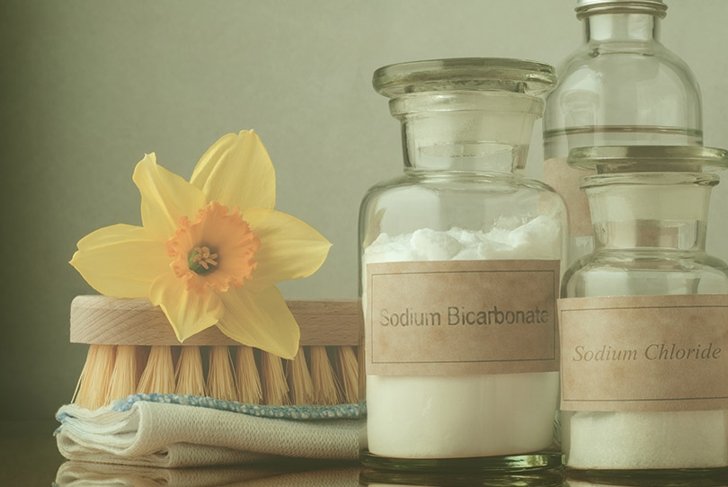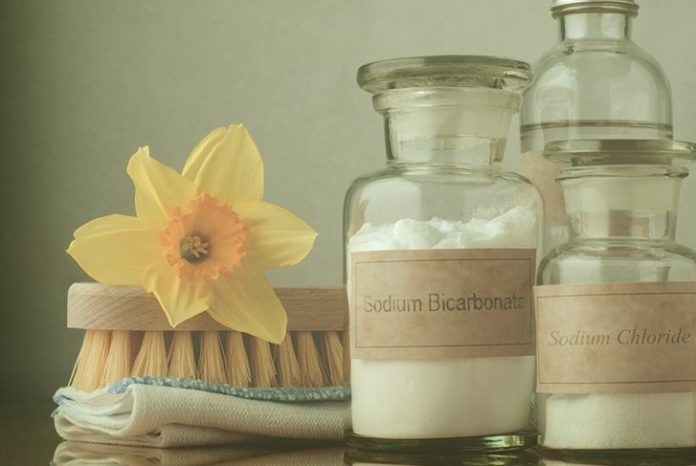
Do you know what toxic ingredients your household cleaners may contain? Learn how you can make inexpensive, safe alternatives.
A clean house sounds healthy, but volatile organic compounds (VOCs) found in conventional cleaners can increase toxic indoor air quality. By learning how to avoid VOCs and their health effects, and by experimenting with natural cleaning ingredients, we can keep our houses clean and our lungs happy.
What are VOCs?
VOCs comprise a large group of carbon-based chemicals that easily evaporate at room temperature, a process called releasing or off-gassing. There are thousands of different VOCs, and many are found in common household products ranging from carpets to upholstery, cosmetics to cleaning products. Some VOCs emit an odour; others don’t. Either way, these compounds can cause a host of health problems.
A new study by Environmental Defence Canada, a nonprofit environmental group, found that after cleaning 14 Canadian homes, air quality in 12 homes exceeded German standards for indoor VOC levels.
Why German standards? There aren’t any Canadian ones. That’s because Health Canada’s warnings emphasize products that can cause burns, fires, poisonings, and explosions. However, beyond telling consumers to ventilate homes and use low-VOC products, it hasn’t tackled potentially widespread health issues caused by regularly inhaling these compounds inside our homes.
While we tend to worry about outdoor air quality, indoor VOC levels may be from two to five times higher. In winter, since we tend to stay indoors more with fewer open windows and less circulation of fresh air, VOC levels tend to rise.
Effects of inhaling VOCs
Researchers have long known that inhaling VOCs can affect many systems in our bodies. Most studies have looked at single VOCs in the workplace for both short- or long-term exposure. Health effects depend on both the concentration and length of exposure to the chemicals.
Short-term exposure symptoms
- eye, nose, and throat irritation
- headaches
- dizziness
- nausea/vomiting
- worsening of asthma symptoms
Long-term exposure symptoms
- increased risk of cancer
- damage to the liver, kidneys, and central nervous system
Researchers are moving from the workplace into the home. Earlier studies showed health issues among people who use industrial-strength cleaners. Now scientists are looking at common household cleaning products, many of which are used over long periods of time.
Serious health concerns at home
- Use of spray products during household cleaning (especially glass cleaning, furniture, and air freshening sprays) affects respiratory health, increasing the incidence of wheezing, asthma symptoms and medication use, doctor-diagnosed asthma, and poorly controlled asthma.
- Higher exposure to domestic chemicals during pregnancy may cause persistent wheezing and lung function abnormalities in nonallergic children.
- Long-term, frequent use of cleaning and air freshening sprays and scented products appears to be linked to cardiovascular health hazards, particularly in those with pre-existing lung issues.
It’s not just cleanaholics who are at risk. Airborne VOCs released from short-term cleaning can remain in the air for extended periods, affecting others in the house after cleaning is finished. People most at risk include those with respiratory problems such as asthma, young children, the elderly, and people with heightened sensitivity to chemicals. Since pets’ lungs function the same way ours do, they can also be affected.
The dirty truth about greenwashing
In the Environmental Defence report, nine homes cleaned with conventional cleaners had a 120 percent increase in VOCs, while three homes cleaned with verifiable eco-friendly products had only a 35 percent increase in VOCs. However, what was disturbing was that two homes cleaned with self-styled “green” products had a VOC increase of 100 percent, much closer to conventional cleaners than verifiable green ones.
Unfortunately, in an effort to greenwash products, companies use vague, incomplete, or nonspecific claims such as green, all-natural, and environmentally friendly, or otherwise stretch the truth. In one study, 75 percent of products that described themselves as environmentally friendly weren’t.
While the federal government has developed green guidelines with definitions and uses for 12 terms, including compostable, degradable, and recyclable, compliance is voluntary.
What to look for in green
All is not lost. There truly are green household cleaning products out there that are better for our health and the environment. There are several ways for us to recognize them.
Look for verifiable eco-labels such as EcoLogo
Established in 1988 by the federal government, EcoLogo has become an internationally recognized environmental program containing 120 standards and over 7,000 certified products.
Read labels and check manufacturers’ websites
Although the government does not require manufacturers to disclose all of their ingredients, the more truly environmentally friendly a product is, the more likely the manufacturer will give a full list of ingredients.
Avoid the worst offenders
When looking at ingredients, be particularly wary of the following, which are likely to be linked with asthma, cancer, allergies, and multiple chemical sensitivities. Instead, look for products made from plants and plant oils.
- phthalates
- chlorine bleach
- ammonia
- sodium laureth sulphate
- ethoxylated alcohols
- fragrance
Safety tips
- Always ensure the label and container of purchased products are in good condition.
- When using store-bought products, keep in their original containers, read directions carefully, and use as directed.
- Use products in well-ventilated areas.
- Always clearly label homemade cleaning products.
- Store all cleaning products out of reach of children and pets.
Homemade cleaners
Experiment with DIY cleaners using common household items or products available in natural health food stores. For recipes, check out the David Suzuki Foundation’s Queen of Green at queenofgreen.ca.
| Cleaning task | Safe ingredient |
| polishing furniture and cleaning glass, mirrors, and stainless steel | baking soda, lemon juice, salt, and olive oil |
| laundry and all-purpose scrubs | soap granules or flakes and liquid castile soap |
| heavy-duty jobs | borax and washing soda (use sparingly; while less toxic than commercial products, they do have an environmental effect) |
| antibacterial, antifungal, and/or grease-cutting | essential oils such as lemon, lime, grapefruit, tea tree, lemongrass, lavender, and eucalyptus oils (avoid if you’re sensitive to fragrances) |



